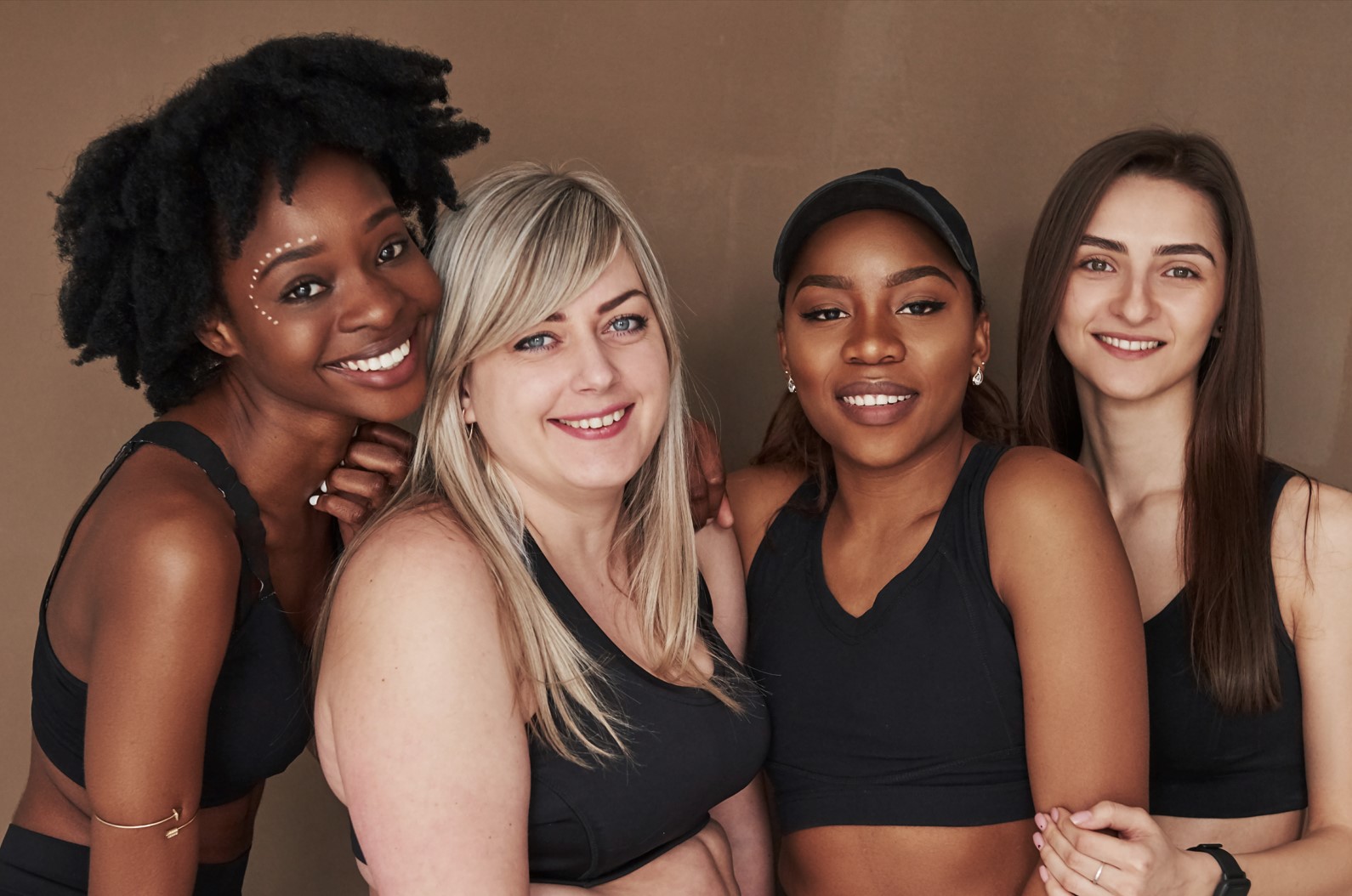
Fitzpatrick skin type or phototype is a system classify the skin by its reaction to exposure to sunlight and the amount of pigment in your skin.
When deciding on which anti-aging skin care treatments you want, knowing your Fitzpatrick skin type may be helpful. The Fitzpatrick scale has six categories: Fitzpatrick I through VI. The system was developed in 1975 by American dermatologist Thomas B. Fitzpatrick and each category is based his own observations of how different skin tones respond to sunlight.
While initially there were four categories, the Fitzpatrick scale was expanded in subsequent years to a total of six. While the best way to determine your skin type with certainty is to consult with a dermatologist, it’s possible to get a fairly accurate idea on your own.
The Fitzpatrick scale is important because it can help people with Fitzpatrick I and Fitzpatrick II skin avoid sunburns and skin cancer, as they are more likely to burn than those with Fitzpatrick III through VI level skin who are better candidates for tanning. Sun exposure can also cause skin aging.
The Six Categories Of The Fitzpatrick Skin Types Scale
The Fitzpatrick Skin Types Scale was designed to classify skin color and type, in order to help dermatologists better evaluate a person’s risk for skin cancer and other sun-related problems. It is based on the principle that people with lighter skin are more susceptible to sun damage than those with darker skin. Assessing Fitzpatrick skin phototypes is primarily about an individual’s skin tone.

Fitzpatrick skin phototype classification:
- Type I – Pale white; burns easily never tans
- Type II – White; burns easily, tans minimally
- Type III – Beige; sometimes burns, tans well
- Type IV – Dark Brown; rarely burns, tans very well
- Type V – Black darker skin tones; never burns, tans very well
- Type VI – Very dark; never burns, tans extremely well
The Fitzpatrick Scale is helpful in determining the best sunscreen for your skin type. When the skin burns, it increases the risk of skin cancer. People with Fitzpatrick I and Fitzpatrick II skin should use a higher SPF sunblock than those with Fitzpatrick III through VI skin. By using the Fitzpatrick Scale, people can better protect their skin from sun damage and reduce their risk of developing skin cancer.
We discuss Understanding Hydrolyzed Hyaluronic Acid Skin Benefits in this article.
What is the foundation for the Fitzpatrick skin phototype?
The quantity of melanin pigment in the skin determines the Fitzpatrick skin type, also known as phototype. Constitutional color (white, brown, or black skin) and the impact of UV radiation exposure decide this (tanning). Pale or white skin needs greater protection from the sun since it tans slowly and burns readily. Darker skin tans more readily and burns less. Additionally, after damage, it is more likely to develop post inflammatory pigmentation (brown marks).
Fitzpatrick skin phototype is an innate trait that manifests at birth. It should be noted that while individuals with photosensitivity may burn quickly when exposed to the sun owing to a condition, medicine, or illness, their ability to tan is unaffected by their photosensitivity.
What Is The Most Common Fitzpatrick Skin Type?
In general, Fitzpatrick III is the most common Fitzpatrick skin type. People with Fitzpatrick III skin have beige or olive-toned skin that tans well and rarely burns in the sun. Fitzpatrick IV and Fitzpatrick V are also common Fitzpatrick skin types, particularly for those of Mediterranean or Middle Eastern descent. Fitzpatrick VI is the rarest Fitzpatrick skin type and is most often seen in people of African or Asian descent.
It is important to note that everyone’s skin reacts differently to sunlight, so it is a good idea to ask your dermatologist for advice on choosing the best sunscreen for your Fitzpatrick skin type.
How Can I Protect My Skin Type?
The best way to protect your Fitzpatrick skin phototype from sun damage is to use a broad-spectrum sunscreen with an SPF of at least 30 and limit your exposure to the sun when it is at its strongest. Additionally, wearing protective clothing and seeking shade whenever possible are also important ways to protect your Fitzpatrick skin phototype from the harmful effects of the sun.
Overall, Fitzpatrick skin type or phototype is an important classification system that can help people determine the best sunscreen for their skin. By using the Fitzpatrick Scale, people can better protect their skin from sun damage and reduce their risk of developing skin cancer.
For all skin types, artificial tanning devices and beds can be dangerous. According to a 2013 study, there is a 75% increased risk of melanoma in persons who use an artificial tanning bed before the age of 35.
Experts advise against using artificial tanning beds for any reason, regardless of skin type.
It is essential to understand your Fitzpatrick skin type or phototype as it helps you to identify the level of protection needed from the sun and understand your risk of developing skin cancer. This information is invaluable when it comes to protecting your Fitzpatrick skin phototype from the sun’s harmful rays.
Is Skin Cancer Risk Greater Depending On My Fitzpatrick Skin Phototype
Unfortunately yes, skin cancer risk is greater depending on your Fitzpatrick skin phototype, which is determined by your natural skin color and reaction to sun exposure. People with Fitzpatrick skin phototypes I and II have the greatest risk to develop skin cancer, while people with Fitzpatrick skin phototypes V and VI have the lowest risk. Melanin in the skin absorbs and scatters energy from UV light to protect skin cells from damage.
Fitzpatrick skin phototypes III through V have a moderate risk of developing skin cancer. It is important to note that the Fitzpatrick skin phototype does not determine the level of protection from sunburns, which can still occur even in those with Fitzpatrick skin phototypes V and VI. In general, types I and II are the most sun-reactive skin types while individuals with very dark skin tones generally can expect to have a lesser risk of skin cancers.
Are Fitzpatrick skin phototypes Scientifically valid?
There is some scientific basis to the Fitzpatrick skin phototypes. The theory is that people with different Fitzpatrick skin phototypes have different responses to ultraviolet radiation (UVR) from the sun. Individuals with Fitzpatrick skin phototype I are thought to be very sensitive to sunlight and are at an increased risk for burning, while those with Fitzpatrick skin phototype VI are thought to be very resistant to burning and have a natural tan.
However, there is a lot of individual variability within each Fitzpatrick skin phototype, so it’s not possible to say that all individuals with a certain Fitzpatrick skin phototype will have the same response to UVR. Additionally, many other factors besides UV exposure can affect someone’s risk of developing skin cancer, such as genetics and lifestyle factors. Therefore, Fitzpatrick skin phototypes should only be used as a general guide when evaluating your risk of sunburn and skin cancer.
It is important to remember that the Fitzpatrick scale is just one tool for assessing your risk for skin cancer and it is important to talk to your doctor about your individual risk. Your doctor may recommend other methods for assessing your skin cancer risks, such as a physical examination or a family history evaluation. Additionally, it is important to practice safe sun practices and use proper protection when spending time outdoors – no matter what Fitzpatrick skin phototype you have!
With the right information, Fitzpatrick skin phototypes can be a helpful tool to understand your individual risk of skin cancer. Knowing your Fitzpatrick skin phototype can help you make informed decisions and take the necessary steps to protect your skin from UV rays. If you have any concerns about your Fitzpatrick skin phototype or are worried that you may be at risk for developing skin cancer, it is important to talk to your doctor.
What Is Your Fitzpatrick Skin Type? Take This Quiz
Instructions: Each answer has a numerical value next to it. Choose one answer to each question and add up the numbers associated with your responses. Scoring is available at the end of the quiz.
What color are your eyes?
0 – Light blue, gray, green
1- Blue, gray, or green
2 – Blue
3 – Dark Brown
4 – Brownish Black
What is the natural color of your hair?
0 – Sandy red
1 – Blonde
2 – Chestnut/ Dark Blonde
3 – Dark brown
4 – Black
What color is your skin (unexposed areas)?
0 – Reddish
1 – Very Pale
2 – Pale with a beige tint
3 – Light brown
4 – Dark brown
Do you have freckles on unexposed areas?
0 – Many
1 – Several
2 – Few
3 – Incidental
4 – None
What happens when you stay too long in the sun?
0 – Painful redness, blistering, peeling
1 – Blistering followed by peeling
2 – Burns sometimes followed by peeling
3 – Rare burns
4 – Never had burns
To what degree do you turn brown?
0 – Hardly or not at all
1 – Light color tan
2 – Reasonable tan
3 – Tan very easily
4 – Turn dark brown quickly
Do you turn brown with several hours of sun exposure?
0 – Never
1 – Seldom
2 – Sometimes
3 – Often
4 – Always
How does your face react to the sun?
0 – Very sensitive
1 – Sensitive
2 – Normal
3 – Very resistant
4 – Never had a problem
When did you last expose your body to the sun (or artificial sunlamp/tanning cream)?
1 – More than 3 months ago
2 – 2-3 months ago
3 – 12 months ago
4 – Less than a month ago
5 – Less than 2 weeks ago
Do you expose your face to the sun? (for the purpose of this quiz we have changed this question from the original: Did you expose the area to be treated to the sun?)
1 – Never
2 – Hardly ever
3 – Sometimes
4 – Often
5 – Always
Total up your points and match your score below to find your skin type.
Fitzpatrick Scale Quiz Score
0-7 = Type I
8-16 = Type II
17-25 = Type III
25-30 = Type IV
Over 30 = Type V-VI
Final Thoughts About Fitzpatrick Skin Types
Fitzpatrick skin types are often utilized to identify the the risk of skin cancer caused by UV radiation exposure. However, a number of other variables, including geography and family history, also increase the chance of developing skin cancer. The Fitzpatrick scale remains a recognized tool for dermatological research into human skin pigmentation. The validity and reliability of this well-known scale are widely accepted and it has been applied in many research studies.
The scale has limits, particularly for People of Color who do not cleanly fall into one of the six kinds. Due to the limits of medical practitioners who rely on the Fitzpatrick scale, there is less knowledge about the risk of skin cancer in People of Color, which may lead to a later diagnosis of skin cancer.
A person should see a doctor if any skin changes look unusual or cause concern.
Our Anti Aging Skin Care Treatments Are Suitable For All Fitzpatrick Skin Types
Call 848-992-3157 or Contact Us Now To Schedule A Consultation
Frequently Asked Questions
Q: Does the skin cancer foundation offer a skin cancer risk assessment?
A: Yes, the Skin Cancer Foundation does offer a skin cancer risk assessment. You can take the quiz on their website to see if you are at risk for developing skin cancer. They also have a number of resources available to help you stay safe in the sun and protect your skin from the harmful effects of UV radiation.
Q: What is the best way for measuring skin cancer risk?
A: There is no one “best” way for measuring skin cancer risk. However, the most commonly used methods include a skin examination by a doctor, an assessment of your family history of skin cancer, and an assessment of your personal history of skin cancer.
Other factors that may also be considered regarding the risk of skin cancer include the number of moles on a person’s body, the size and color of moles, and whether a person has had sunburns in the past.


